Abstract
Numerous investigators have suspected that there is a genetic predisposition to rheumatic fever (RF). In this context we have recently produced a series of monoclonal antibodies directed against B cells obtained from RF patients one of which, labeled D8/17, identifies a B cell antigen present in 100% of all RF patients studied. While the highest percentage of positive cells were exhibited by RF probands (33.5% +/- SE), the percentage of cells in unaffected siblings and parents was 14.6 and 13%, respectively. The percentage of positive cells in APSGN probands, unaffected siblings, and parents was 2.96, 3.86, and 2.8%, respectively. A low level of B cells (5-7%) bearing the D8/17 marker was seen in control patients. The segregation pattern of the phenotypes defined by the percentage of D8/17 positive cells within HLA-typed RF families are consistent with an autosomal recessive mode of inheritance not associated with the human MHC system. We postulate that these phenotypes indicate the presence of at least one necessary genetic factor for susceptibility to RF.
Full text
PDF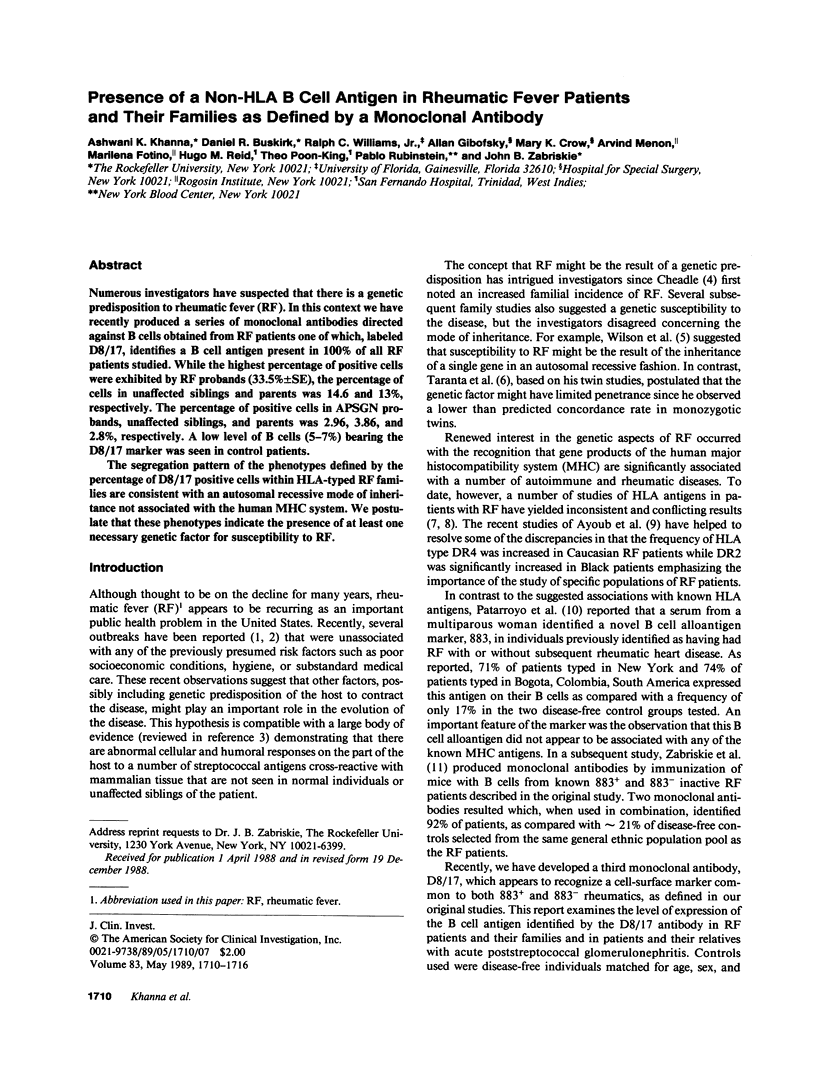
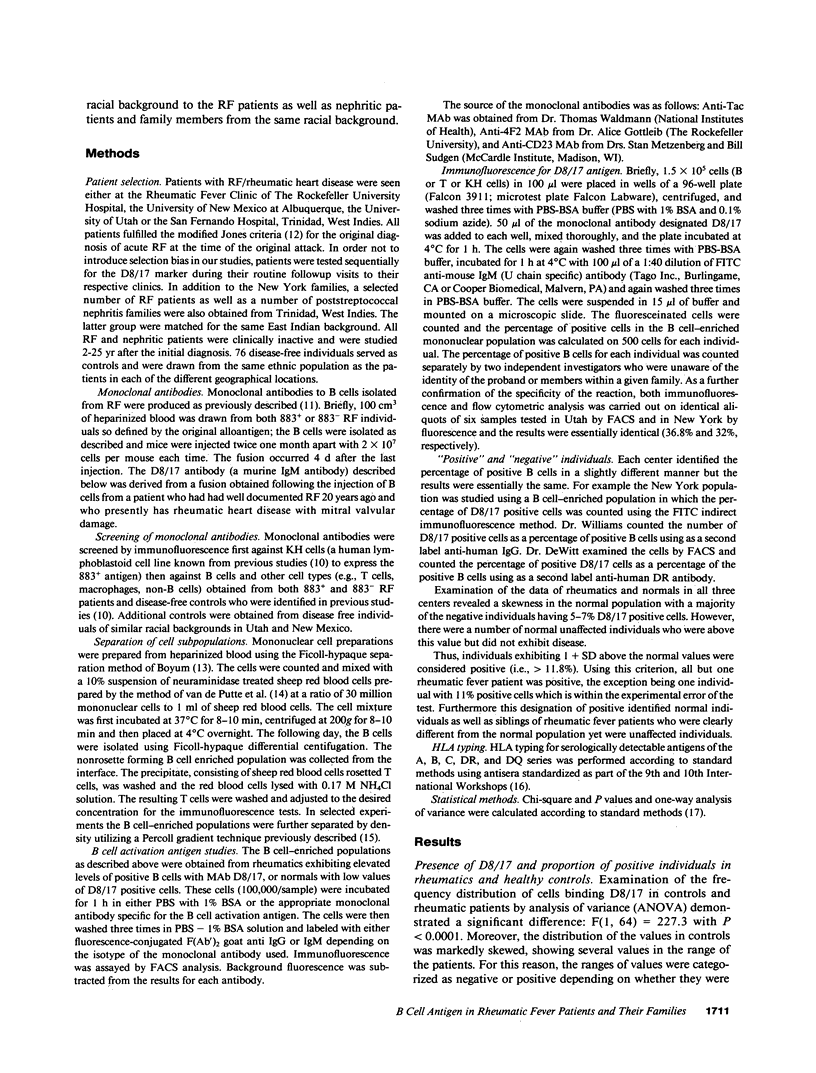
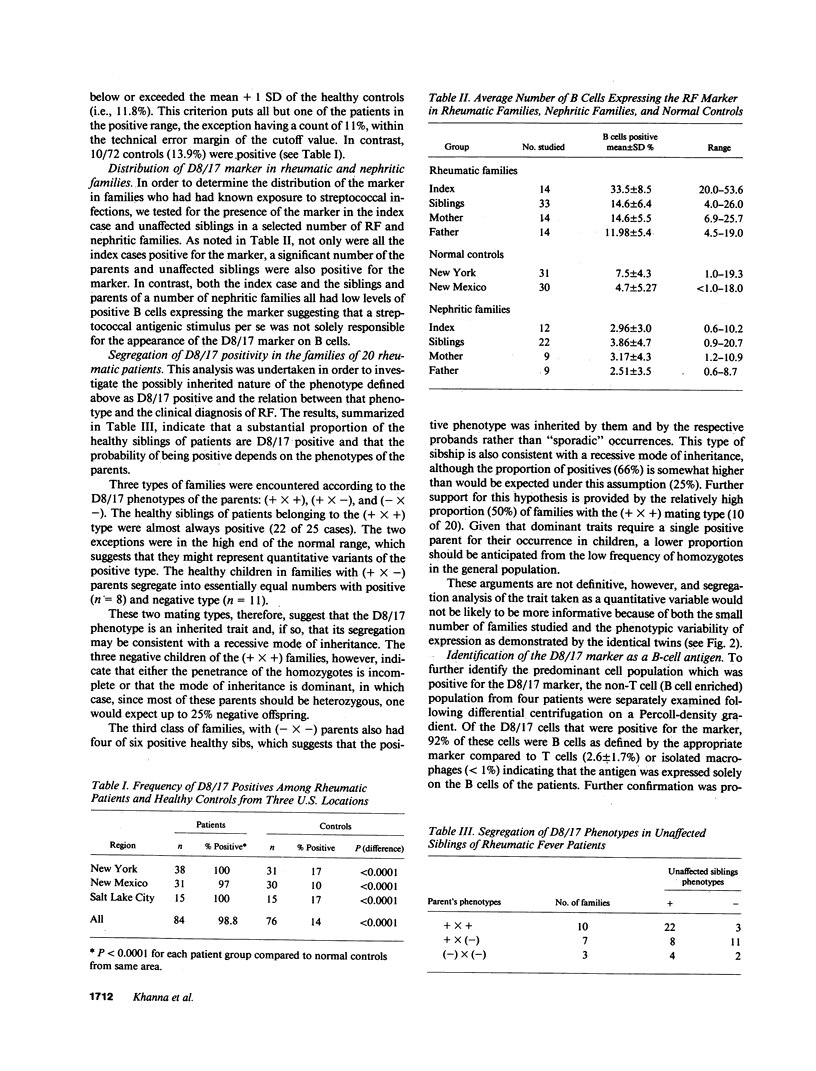
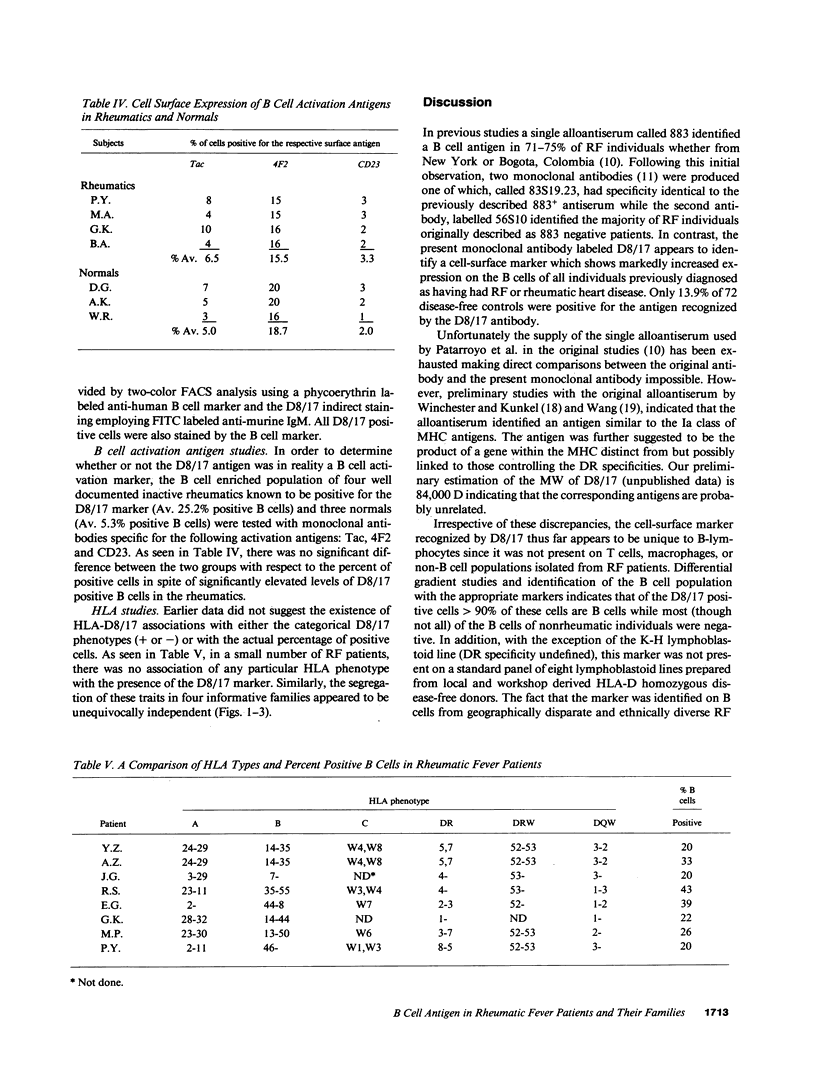
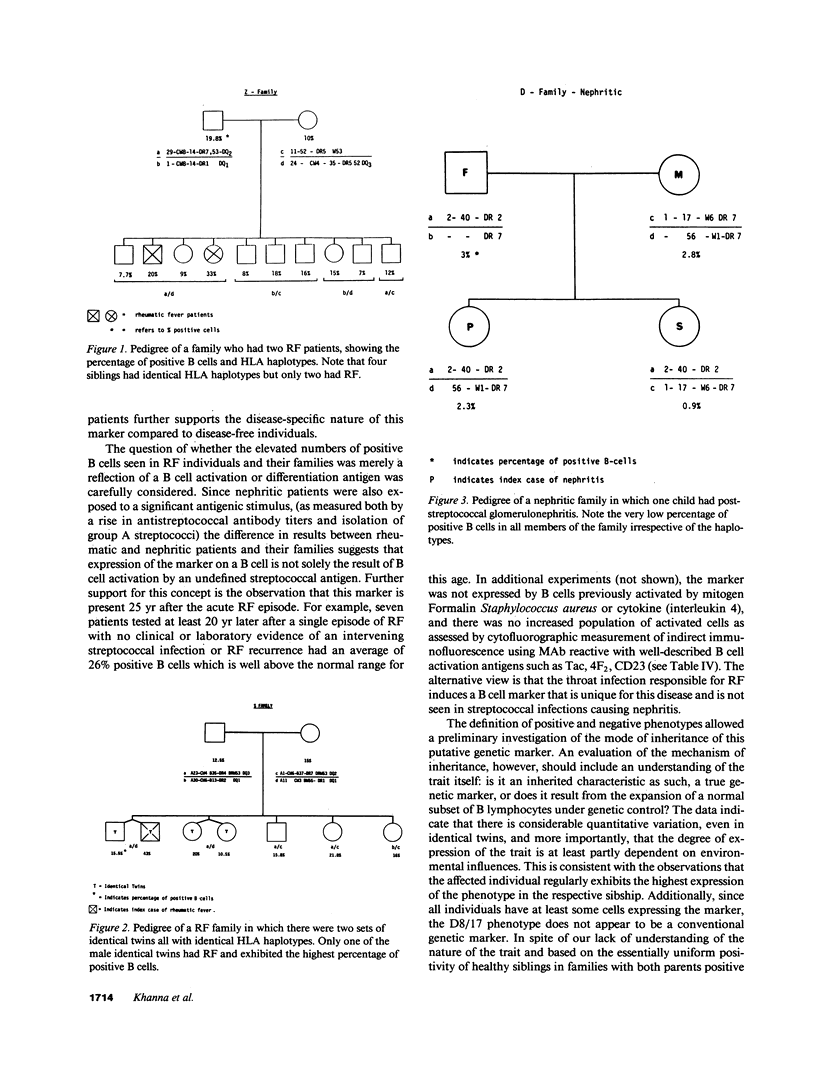
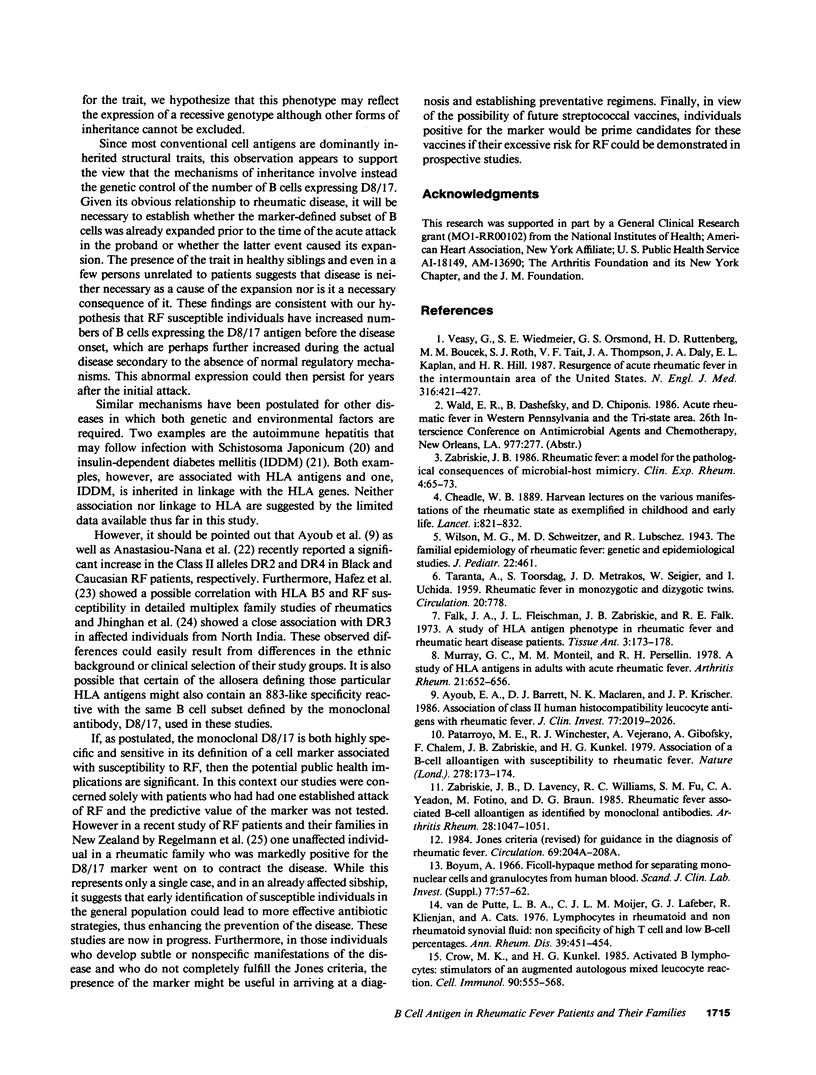
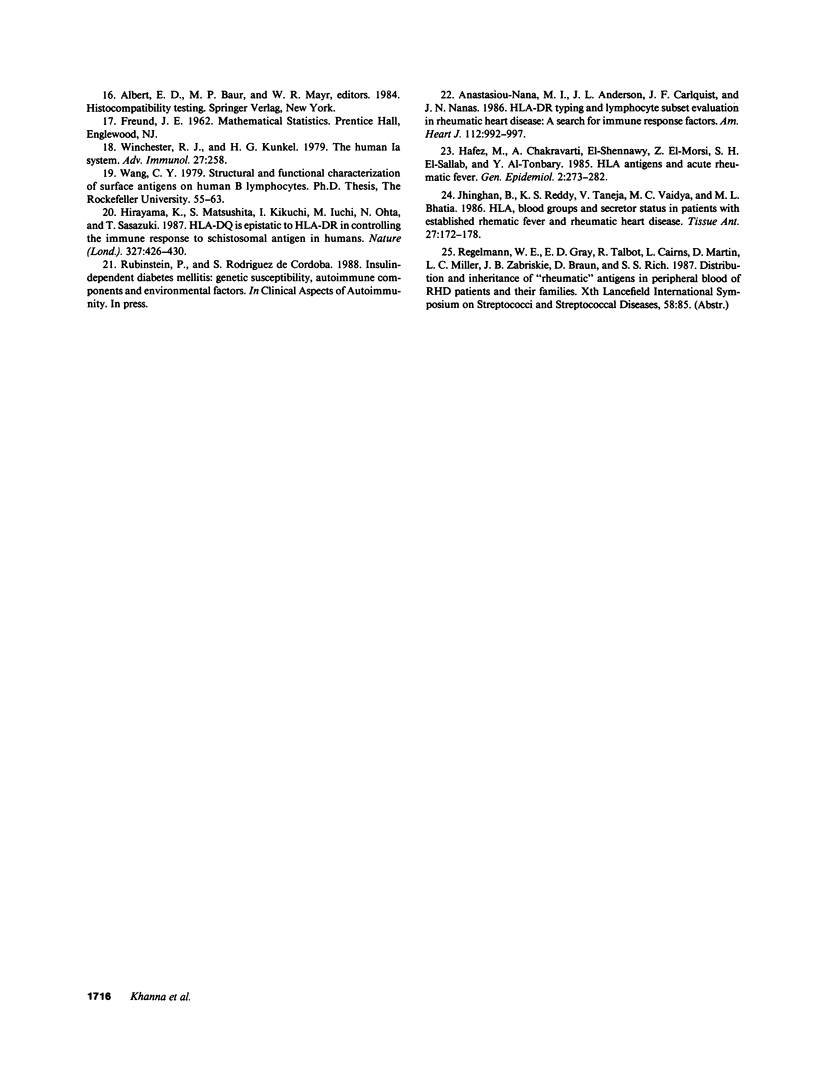
Selected References
These references are in PubMed. This may not be the complete list of references from this article.
- Anastasiou-Nana M. I., Anderson J. L., Carlquist J. F., Nanas J. N. HLA-DR typing and lymphocyte subset evaluation in rheumatic heart disease: a search for immune response factors. Am Heart J. 1986 Nov;112(5):992–997. doi: 10.1016/0002-8703(86)90311-x. [DOI] [PubMed] [Google Scholar]
- Ayoub E. M., Barrett D. J., Maclaren N. K., Krischer J. P. Association of class II human histocompatibility leukocyte antigens with rheumatic fever. J Clin Invest. 1986 Jun;77(6):2019–2026. doi: 10.1172/JCI112531. [DOI] [PMC free article] [PubMed] [Google Scholar]
- Crow M. K., Kunkel H. G. Activated B lymphocytes: stimulators of an augmented autologous mixed leukocyte reaction. Cell Immunol. 1985 Feb;90(2):555–568. doi: 10.1016/0008-8749(85)90220-5. [DOI] [PubMed] [Google Scholar]
- Falk J. A., Fleischman J. L., Zabriskie J. B., Falk R. E. A study of HL-A antigen phenotype in rheumatic fever and rheumatic heart disease patients. Tissue Antigens. 1973;3(3):173–178. doi: 10.1111/j.1399-0039.1973.tb00991.x. [DOI] [PubMed] [Google Scholar]
- Hafez M., Chakravarti A., el-Shennawy F., el-Morsi Z., el-Sallab S. H., Al-Tonbary Y. HLA antigens and acute rheumatic fever: evidence for a recessive susceptibility gene linked to HLA. Genet Epidemiol. 1985;2(3):273–282. doi: 10.1002/gepi.1370020305. [DOI] [PubMed] [Google Scholar]
- Hirayama K., Matsushita S., Kikuchi I., Iuchi M., Ohta N., Sasazuki T. HLA-DQ is epistatic to HLA-DR in controlling the immune response to schistosomal antigen in humans. Nature. 1987 Jun 4;327(6121):426–430. doi: 10.1038/327426a0. [DOI] [PubMed] [Google Scholar]
- Jhinghan B., Mehra N. K., Reddy K. S., Taneja V., Vaidya M. C., Bhatia M. L. HLA, blood groups and secretor status in patients with established rheumatic fever and rheumatic heart disease. Tissue Antigens. 1986 Mar;27(3):172–178. doi: 10.1111/j.1399-0039.1986.tb01517.x. [DOI] [PubMed] [Google Scholar]
- Murray G. C., Montiel M. M., Persellin R. H. A study of HLA antigens in adults with acute rheumatic fever. Arthritis Rheum. 1978 Jul-Aug;21(6):652–656. doi: 10.1002/art.1780210607. [DOI] [PubMed] [Google Scholar]
- Patarroyo M. E., Winchester R. J., Vejerano A., Gibofsky A., Chalem F., Zabriskie J. B., Kunkel H. G. Association of a B-cell alloantigen with susceptibility to rheumatic fever. Nature. 1979 Mar 8;278(5700):173–174. doi: 10.1038/278173a0. [DOI] [PubMed] [Google Scholar]
- Veasy L. G., Wiedmeier S. E., Orsmond G. S., Ruttenberg H. D., Boucek M. M., Roth S. J., Tait V. F., Thompson J. A., Daly J. A., Kaplan E. L. Resurgence of acute rheumatic fever in the intermountain area of the United States. N Engl J Med. 1987 Feb 19;316(8):421–427. doi: 10.1056/NEJM198702193160801. [DOI] [PubMed] [Google Scholar]
- Zabriskie J. B., Lavenchy D., Williams R. C., Jr, Fu S. M., Yeadon C. A., Fotino M., Braun D. G. Rheumatic fever-associated B cell alloantigens as identified by monoclonal antibodies. Arthritis Rheum. 1985 Sep;28(9):1047–1051. doi: 10.1002/art.1780280912. [DOI] [PubMed] [Google Scholar]
- Zabriskie J. B. Rheumatic fever: a model for the pathological consequences of microbial-host mimicry. Clin Exp Rheumatol. 1986 Jan-Mar;4(1):65–73. [PubMed] [Google Scholar]


